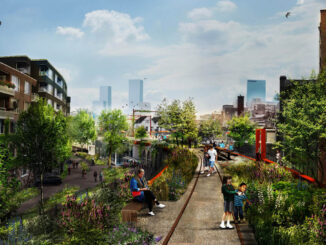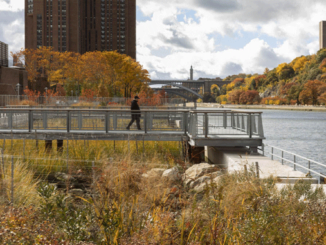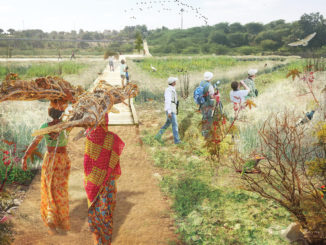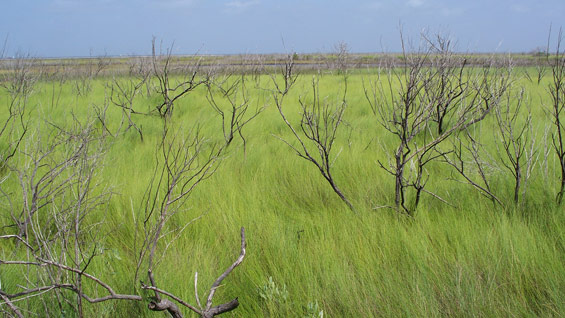
StudioOutside is leading a comprehensive team in the redevelopment master planning for Galveston Island State Park. Ravaged by Hurricane Ike, the park is a dynamic environmental remnant of the Texas barrier island system that offers the full “bay to beach” experience. The master plan infuses a holistic approach to habitat restoration, visitor experience, recreation, and economic sustainability. The diversity of Galveston Island State Park (GISP) is like none other on the Texas coast. Showcasing a complex mosaic of coastal dunes, strand prairies, and salt marsh, the park is a dynamic environmental remnant of the Texas barrier island system, offering an unparalleled “beach to bay” experience that is no longer attainable elsewhere on the island.
The pressures of natural and man-made phenomena, however, have compromised the fragile balance of this environment. Ravaged by Hurricane Ike, key park facilities were lost and have yet to return. Those facilities that did survive do so in locations that impact key natural systems. A state highway bisects the park into two disjoint “beach and bay parks,” underscoring the dichotomy between man and nature that threatens the very existence of this park.
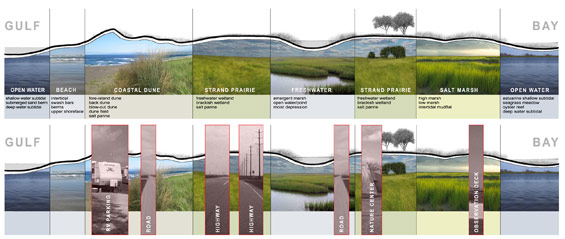
Texas Parks and Wildlife commissioned the studioOutside team, which included Overland Partners Architects, BioHabitats (environmental), and the PRD Group (interpretation), to craft a visionary plan that would initiate a rebirth of the park. The team canvassed a national audience to identify program opportunities and delivery methods that specifically repositioned Galveston Island State Park to effectively meet a changing market. Attention was given to program typologies, delivery methods, and economic viability/ sustainability as it relates to the market and staff.
The future of GISP, however, resided in a balance between recreation and nature. A series of ‘sensitivity overlays’ documented the value of key park attributes such as culture, ecology, and experience. The team understood that coastal dynamics such as weather patterns, sea level rise, and subsidence would dramatically influence the future physical form of GISP. A series of predictive maps were developed over a 50-year time horizon that estimated the park could lose up to 22% of its current land mass.

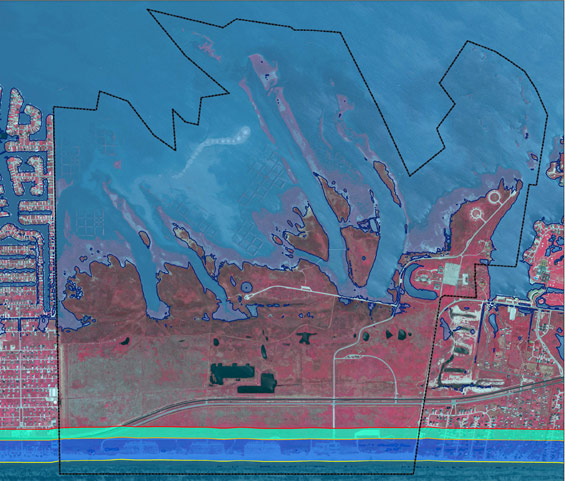
Looking toward this predictive future, the master plan infuses a holistic approach to habitat restoration, sustainability, interpretation, visitor experience, and recreation. The plan responds to critical parameters unique to this coastal habitat that include design horizons, design standards, influence of sea level rise and subsidence, and site planning sensitive to this habitat.
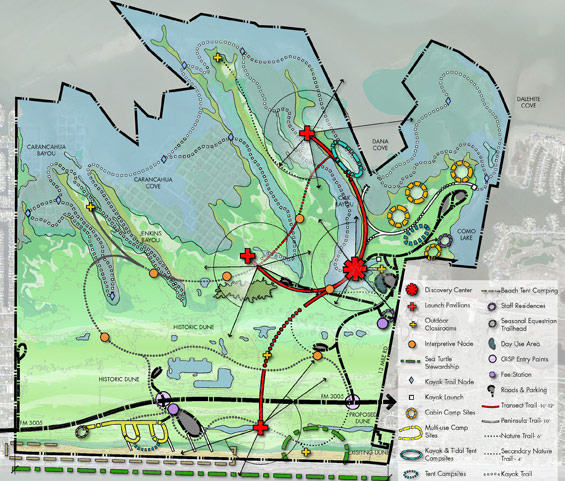
The visitor experience at Galveston Island State Park begins at the Discovery Center, where the structure’s siting and state of the art LEED construction capitalize on bay views while emphasizing the dynamic nature and fragility of the natural systems around it. The Discovery Center responds to a key goal of the planning process requiring that all site facilities respond appropriately to site evolutions identified within the predictive models. In the case of the Discovery Center, the facility is designed to adapt to the transition of future inundation by the bay.

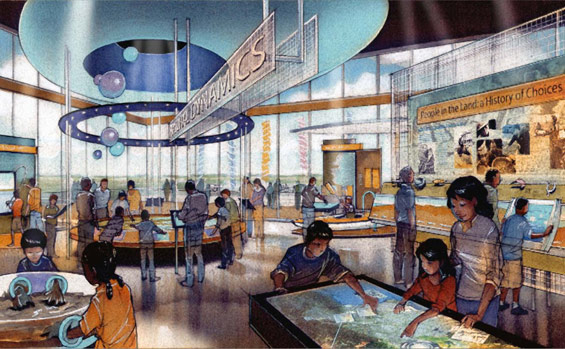
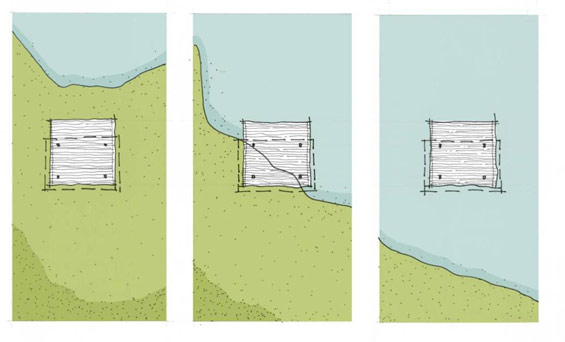
A ‘transect trail’ showcases the dynamic habitat changes that transition from “beach to bay,” utilizing the Discovery Center as its central launch point. A pedestrian crossing over the highway creates a contiguous pedestrian connection that unifies the beach and bay sides of the park.
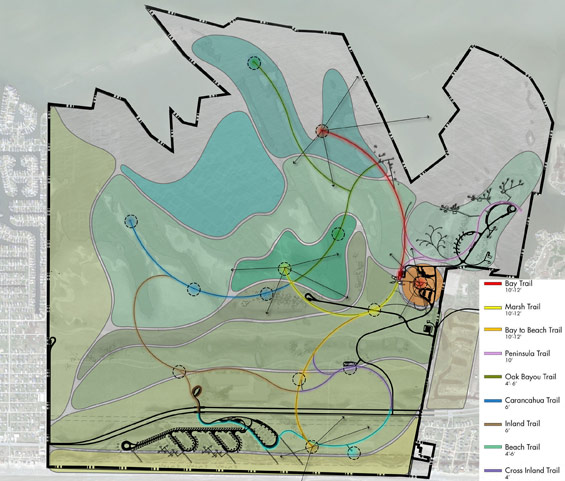
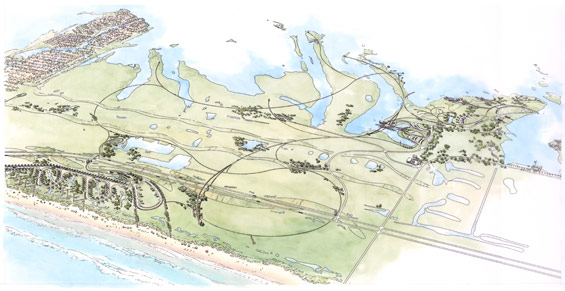
The plan aggregates all park infrastructure development to the edges of the property in order to maximize park views and habitat continuity. Multi-use lodging footprints were limited to the southwest edge of the property, and cabins were clustered on the northwest peninsula to further support these goals. Appropriate buffers were introduced for areas such as the coastal dunes to allow for the proper migration and interpretation of these critical ecosystems.
The plan positions Galveston Island State Park to effectively manage its fragile resources while still providing necessary recreation needs for its constituency. Through establishing appropriate balances between recreation and nature, the park is poised to regain, and retain, its status as one of the most heavily visited state parks in Texas.


